PROTECT YOUR DNA WITH QUANTUM TECHNOLOGY
Orgo-Life the new way to the future Advertising by AdpathwayGrowing our own food is, at its core, a means of increasing our self-sufficiency. While we’re at it, choosing to grow the most nutrient-dense crops takes our edible landscape further, maximizing their value in the garden. It ensures access to fresh food across the seasons, whether fresh or stored.
Vitamin-packed fruits and vegetables maximize the benefits of growing to nourish our bodies. Establishing our gardens with nutritional powerhouses builds our health while adding unparalleled freshness in the kitchen.
Nutrient-rich, calorie-dense crops, including those that store well, are productive options. Trees, shrubs, and perennials bring long-lasting provisions year after year. As summer turns to fall, prime planting season is upon us. Quick-producers like leafy greens supply continual yields that move easily from garden to plate.
From fruit trees for the backyard orchard to small crops to tuck into any landscape, we’ve got the top nutritious garden plants to grow this year.
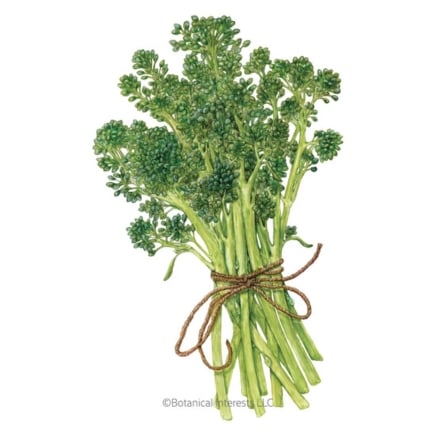
Aspabroc Broccolini Seeds

Honeynut Winter Squash Seeds
Sugar Magnolia Snap Pea

Sugar Magnolia Snap Pea Seeds
Asparagus
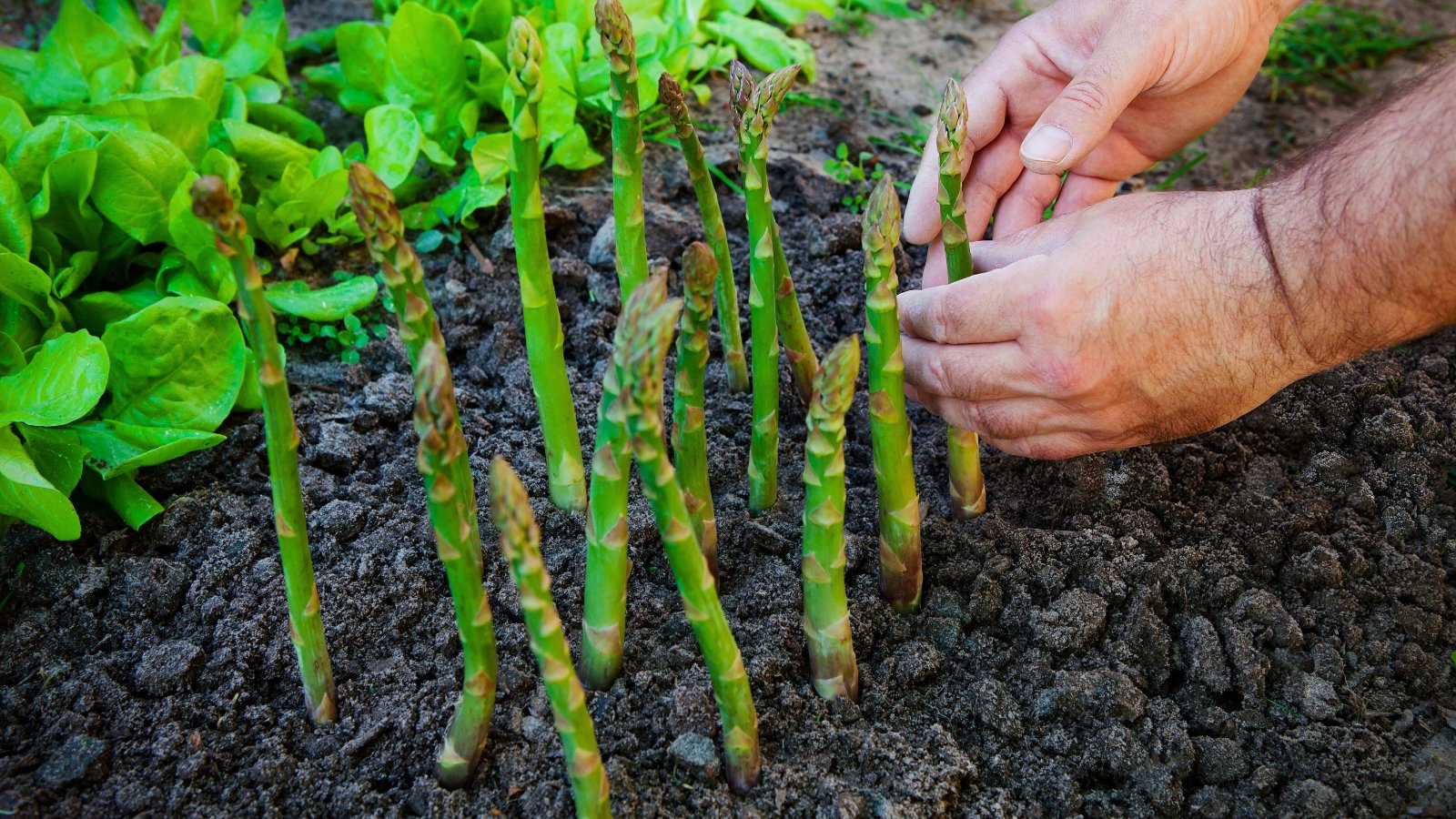 Long-lived perennial that produces early each spring.
Long-lived perennial that produces early each spring.High in folate, amino acids, vitamins, and minerals, asparagus yields its tender, crisp spears in early spring. The cold-hardy, nutritious garden plant is long-lived, up to as many as 15 years, making planting it a worthwhile investment for easy returns.
It takes about two years after planting the crowns to realize a harvest, but from that point on, it produces quickly as temperatures warm. It’s one of the earliest crops to show after winter.
The harvest period lasts about two months, and the ferny leaves develop during the rest of the warm season. Asparagus has extensive roots and tolerates various soil types as long as they’re well-draining. Provide regular moisture as roots establish.
Place asparagus toward the back of the border or along a fence where it can grow freely without shading other selections. Companion plants may provide benefits like deterring asparagus beetles.
‘Millennium’ is a top-performing variety in cold hardiness, yield, and flavor. It has uniform spears with tight tips. It adapts to heavy soils but does best in rich, loose loams. It’s also disease-resistant against rust, Fusarium, and crown rot.
‘Purple Passion’ in deep purple has plump stems with more sugars for a mild flavor. Thicker than green varieties, stems emerge later in the season, protecting sensitive shoots from early frosts.
Sweet Potatoes
 Harvest before frost and store for richer taste.
Harvest before frost and store for richer taste.Sweet potatoes bring calcium, potassium, and vitamins A and C, in addition to fiber. These nutritious garden plants are filling and easy to grow. Grow them in containers, raised beds, or even along walkways as a vining groundcover. Young, tender leaves are edible too.
Sweet potatoes are long-maturing at about 120 days. Source disease-free slips (sprouted eyes) from a reputable grower, and keep the soil moist for four to six weeks as roots establish. Slips from organic roots, or those from last year’s storage harvest, are more viable than treated grocery store potatoes.
After harvesting, sweet potatoes sweeten with curing. Cure them for a week or two in a warm, humid space so they convert starches to sugars (become sweeter) before enjoying.
Sweet potatoes enjoy warm conditions. Plant potatoes after the threat of frost passes and as the soil warms to at least 65°F (18°C) in spring.
Broccoli
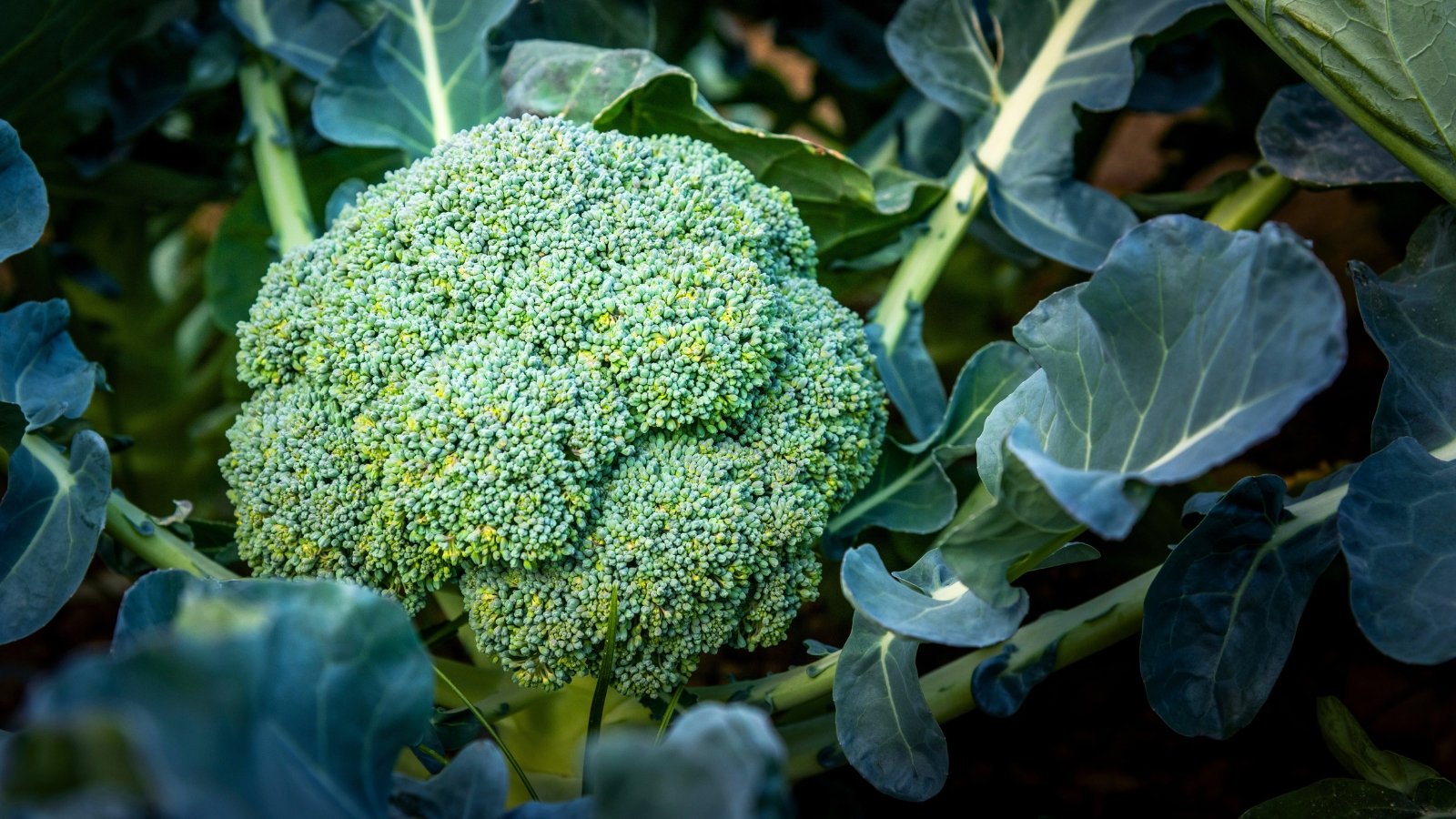 Quick-maturing types offer harvests in spring and fall.
Quick-maturing types offer harvests in spring and fall.Broccoli is a cool-season favorite chock full of nutrients. The leafy greens and forests are a good source of potassium, calcium, iron, and fiber, as well as vitamins B6 and C.
Quick-maturing varieties have a fast turnaround in spring and again in fall before frost. ‘Di Cicco’ is a 1890 Italian heirloom that produces blue-green florets on small to medium heads. It’s ready to harvest in about 48 days.
Broccolini and broccoli raab are other selections with a high nutritional profile. Broccolini is ready in just 60 days, and a delicacy in both its small florets and long, slender spears. Broccoli raab, or ‘Rapini,’ has stems and small crowns that are tender, mild, and slightly peppery. Ready in 45 days, both the leaves and florets are rich and tasty.
Carrots
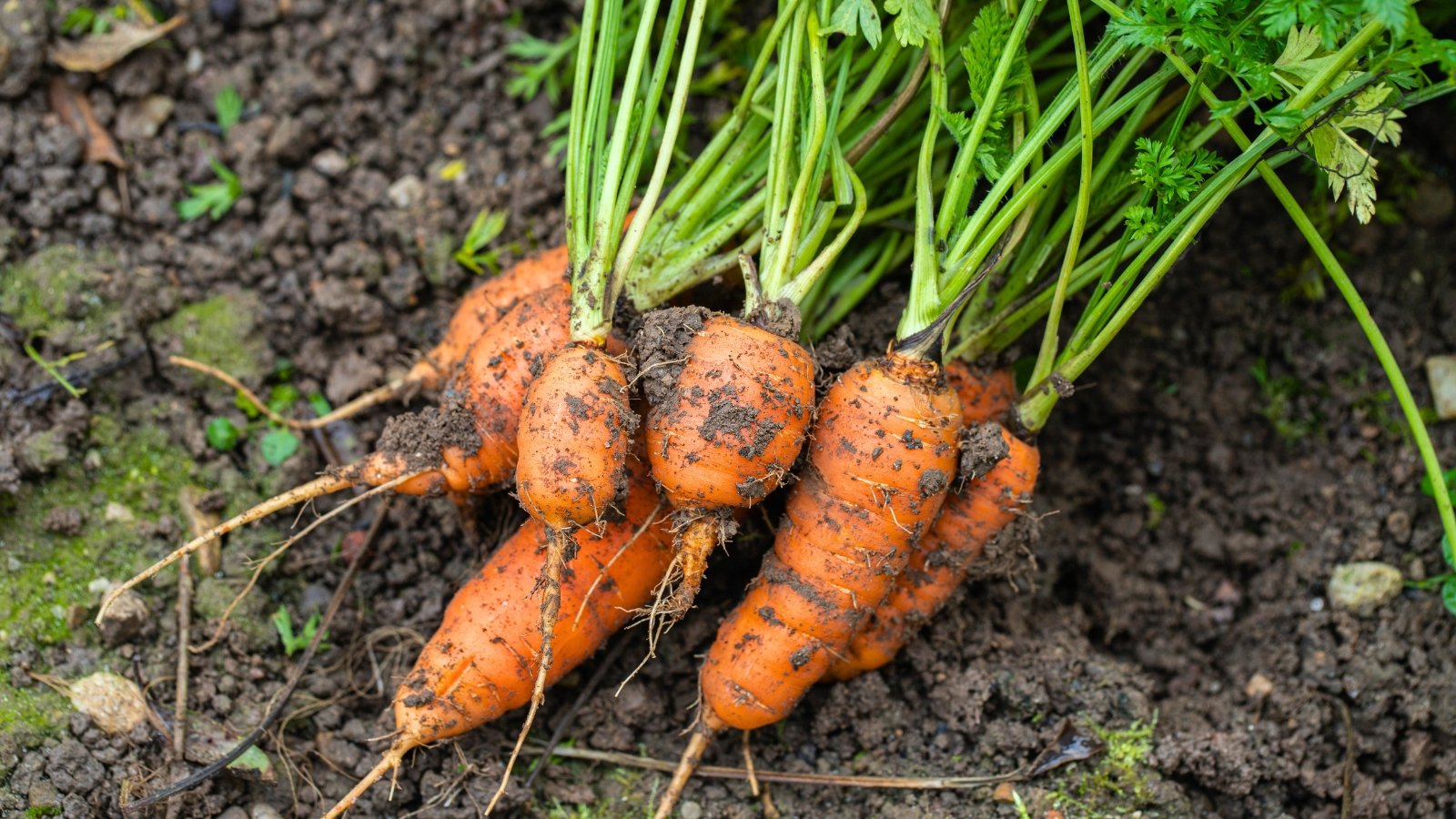 Sow in gaps or with radishes for easy growing.
Sow in gaps or with radishes for easy growing.Not only nutritious garden plants, carrots also fit easily into gaps in the garden. Nestle them in wherever there’s space, or combine them in a patch with radishes for a complementary pairing. Packed with vitamin A and beta carotene, carrots bring a sweet flavor and crunch for fresh eating or cooking.
Carrot tops are edible, too. Clip them from the root after harvesting, leaving about an inch of the stems attached.
In addition to the vibrant orange varieties, there are those in deep purple, resembling the crop’s wild ancestors. ‘Cosmic Purple’ is a colorful selection that contains the antioxidant anthocyanin, which is responsible for its purple exterior. This is the same healthy antioxidant found in blueberries.
Sow carrot seeds 10 to 12 weeks before fall’s first anticipated frost to allow time for harvesting. Pick them early as baby carrots or at full size. They even store in the ground for several weeks, and longer in winter. In warm climates, grow them as cool-season vegetables in fall, winter, and spring.
Bok Choy
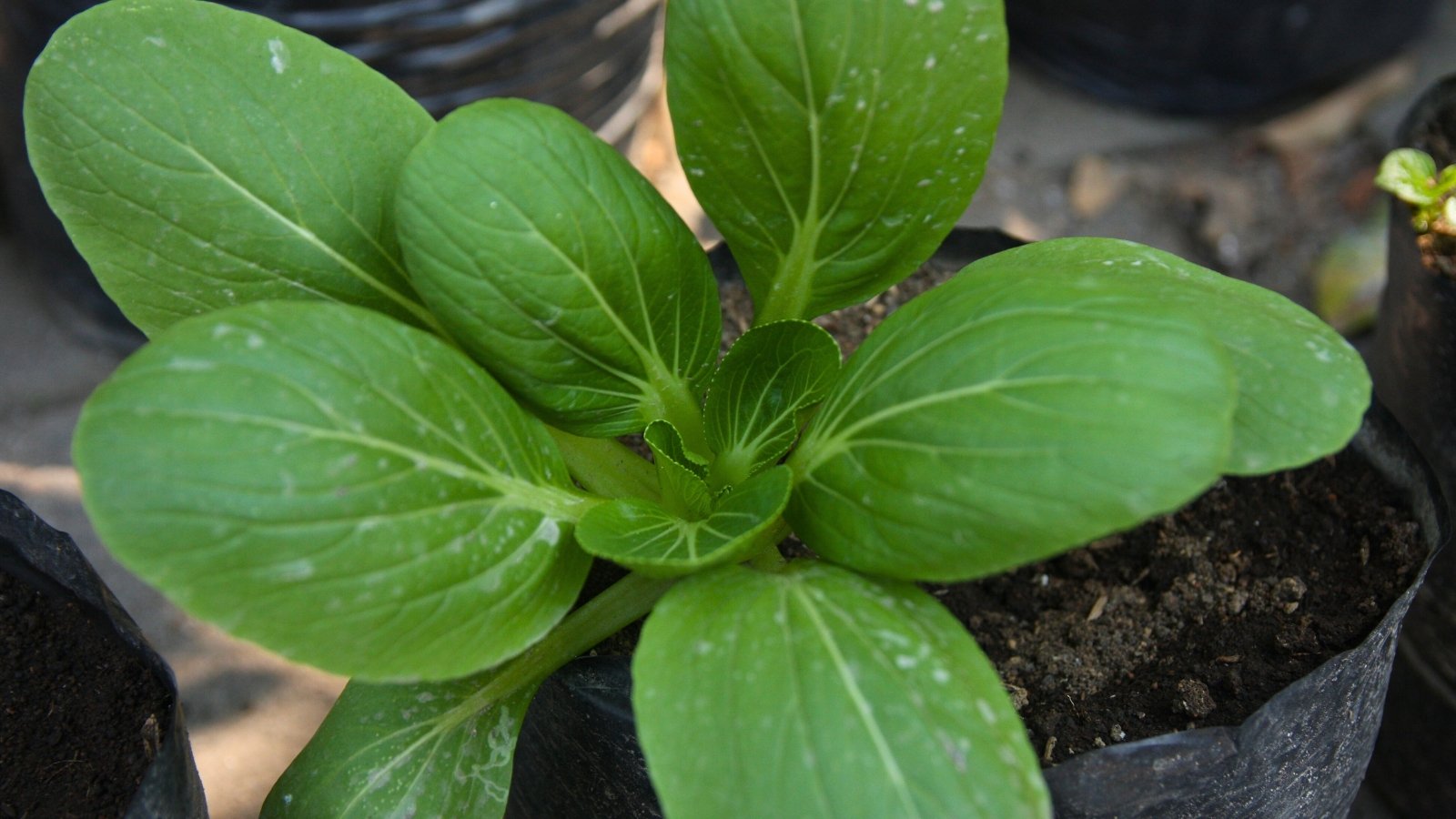 Dwarf varieties grow fast, even in small spaces.
Dwarf varieties grow fast, even in small spaces.Bok choy is the total package for quick production, tender, flavorful leaves, and healthy greens. The leafy vegetable offers protein, dietary fiber, vitamin C, calcium, potassium, and iron.
Bok choy (or pak choi) is a mild, sweet, tender Asian cabbage with centuries of culinary history. Enjoy the leaves of these nutritious garden plants fresh or in cooked dishes and stir-fries.
Dwarf cultivars take up little growing space and are fast to develop, growing even on the kitchen counter. ‘Baby Choi’ matures in 35 to 60 days and is ready for picking early for tender growth and crisp, crunchy white stems. ‘Toy Choy’ is a mini green that grows only five inches tall at maturity and is ready in as little as 30 days.
Turnips
 Leaves and roots both offer nutrition and versatility.
Leaves and roots both offer nutrition and versatility.Turnips make good crops to combat food insecurity for their shelf life and whole edibility. Not only are the roots a hearty stand-in for potatoes, but the leafy greens also have health benefits.
The young, soft leaves are ready quickly at four to five inches tall, excellent raw or cooked. Harvest some of the leaves while leaving most intact as the root develops. Turnips are high in vitamins A, B, C, and E, as well as folic acid, potassium, and dietary fiber.
The adaptable root vegetables grow well in the ground, containers, and raised beds, and make good companions to beets. The roots also reduce soil compaction and improve aeration as they develop beneath the surface. Cold-hardy, they tolerate frost and even heavy freezes.
Hakurei (Japanese turnips) are petite salad turnips that are a fresh delicacy. ‘White Lady’ is a Japanese variety with a sweet flavor, crisp white flesh, and tender skins. Harvest the baby salad turnips when they reach two inches in diameter.
Squash
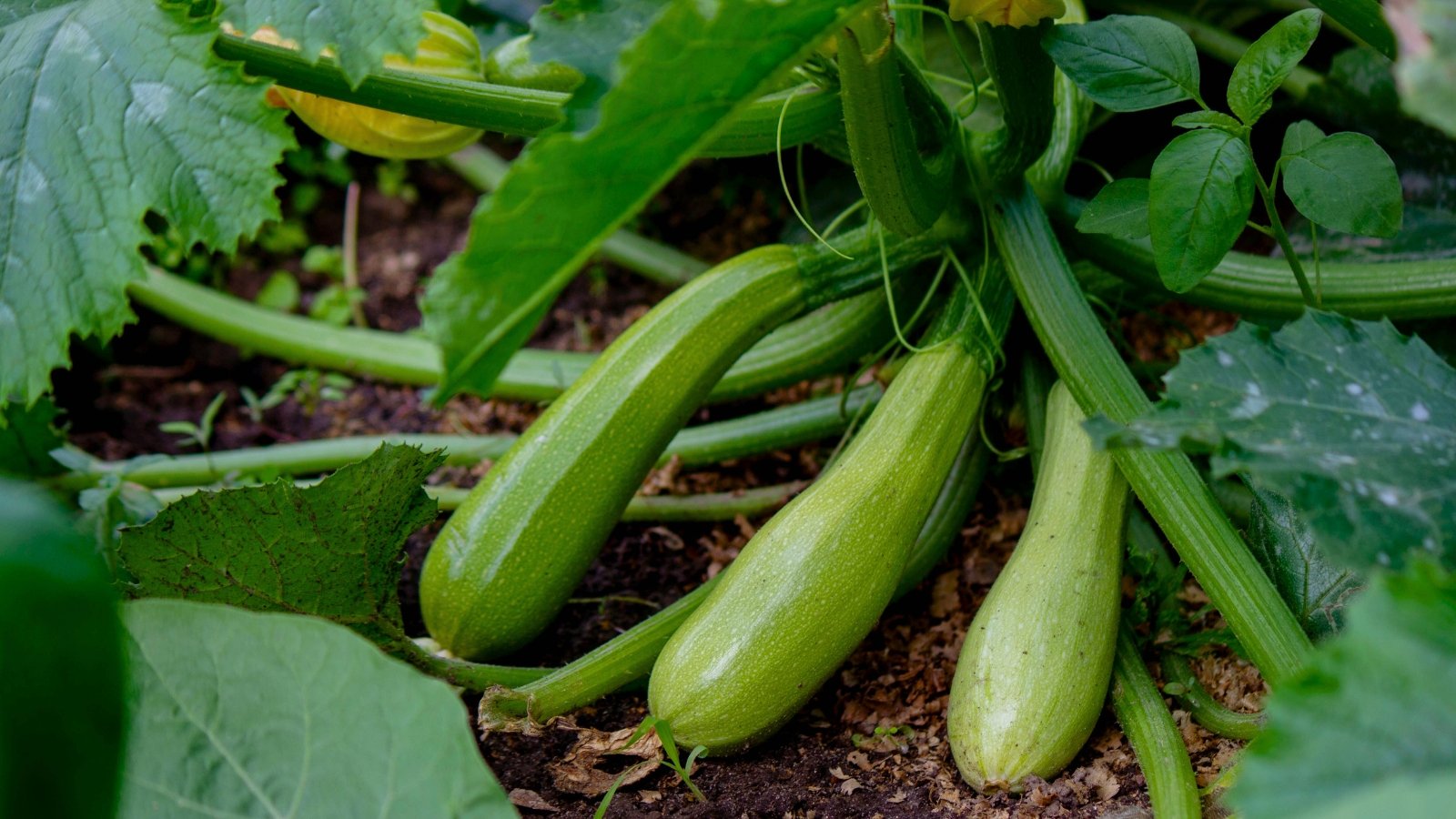 Direct sow after frost for summer or winter harvests.
Direct sow after frost for summer or winter harvests.Summer and winter squashes are productive and filling. Winter squashes, like butternuts and pumpkins, mature in late summer and fall. They have a long storage life for fresh food beyond the harvest season.
Summer squashes, like zucchini and pattypan, produce quickly over the summer for an ongoing yield that’s easy to use in the kitchen.
Squash is easy to grow from seed. Direct sow one to two weeks after spring’s final frost and when soil temperature warms above 70°F (21°C). In warm climates with long growing seasons, you may be able to get a successional round of summer squash with a late summer sowing. Allow enough time (about 55 days or more) to get a harvest before fall’s first frost date.
Beets
 Plant in spring and late summer for two harvest rounds.
Plant in spring and late summer for two harvest rounds.“Eat your beets” is good health advice, and homegrown beets taste the best. These nutritious garden plants are rich in vitamins and minerals, including A, C, iron, potassium, folic acid, and antioxidant benefits. Like turnips and carrots, they also aerate soils as they form underground.
Plant a round of beets in spring just before the final frost and again in mid-to-late summer for a fall harvest, aiming for six to eight weeks before the first frost. The ideal soil temperature for germination and growth is between 60 and 85°F (16-29°C).
‘Robin’ is a baby beet with deep red, two-inch globes that begin at 45 days. ‘Chioggia’ is a sweet-tasting 1800s Italian heirloom and candy-striped variety with white and red rings. The showy, early producer is ready in 55 days.
Blueberry
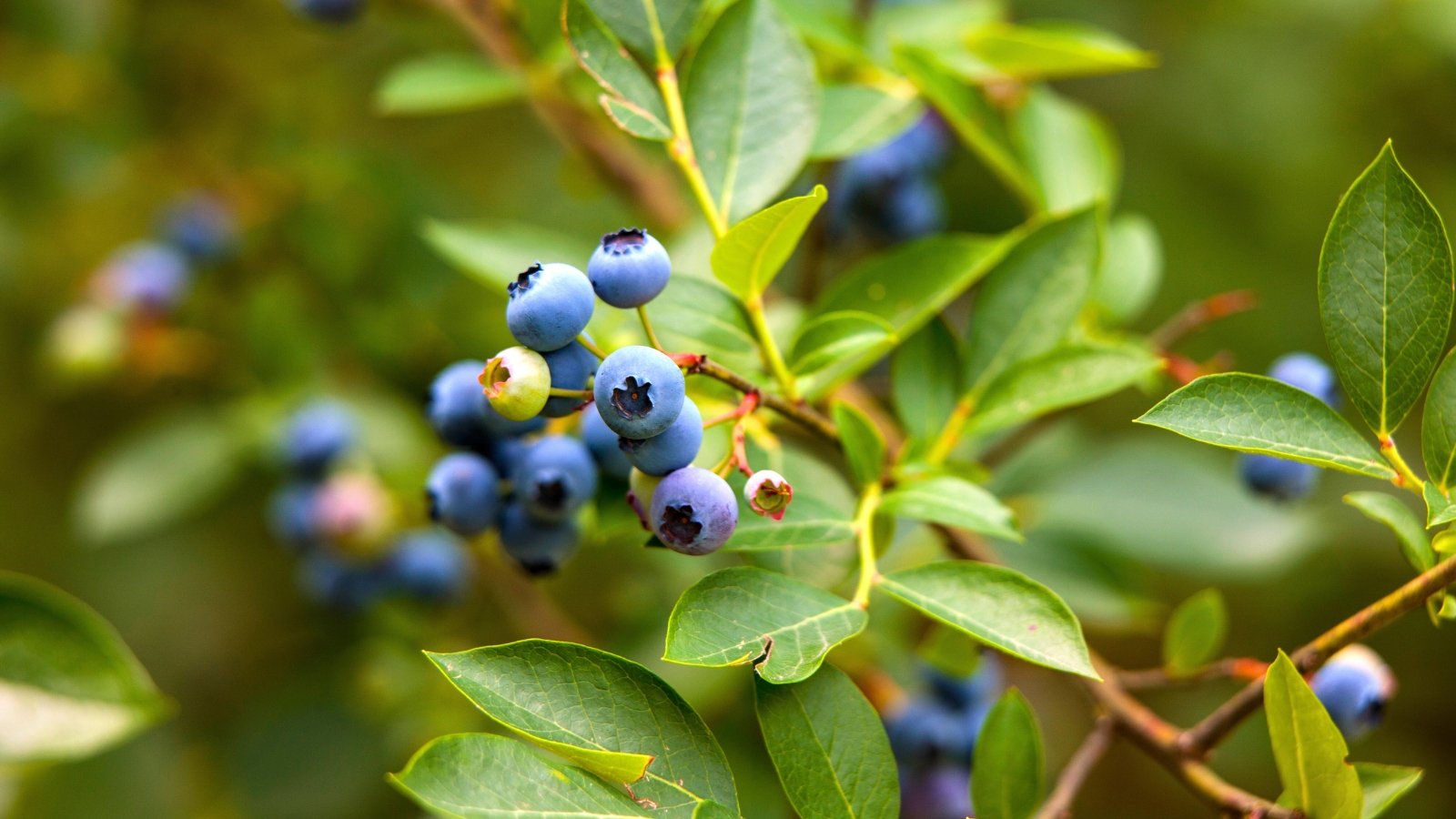 Cross-pollinate for bigger harvests across the season.
Cross-pollinate for bigger harvests across the season.Antioxidant-rich blueberries are available in a range of sizes to fit different garden scales, including pots and containers. From their sweet summertime berries to attractive foliage, spring blooms, and showy fall color, Vaccinium is a woody shrub that bridges the ornamental and edible landscape.
Wild blueberries originate in North America, and cultivated varieties have traits to suit specific climates and growing regions. They attract pollinators with their spring blossoms, and the berries provide forage for birds and wildlife (if you’re willing to share).
Different types of blueberries suit different regions, with northern highbush performing best in cool climates and southern highbush for mild growing areas. Rabbiteye varieties are heat and humidity-tolerant.
Blueberries require a certain amount of chill time that varies by type in order to produce. Northern highbush often requires several weeks between 32 and 45°F (0-7°C). Southern highbush may only need several days, or about 150 chill hours.
Although blueberries are mostly self-fertile, they’ll produce more berries with cross-pollination from another cultivar that blooms at the same time. If you have room for two or more, pair up early, mid, and late-season bloomers.
Swiss Chard
 Sow often to keep young, tender leaves coming.
Sow often to keep young, tender leaves coming.Swiss chard brings a quick return on young, tender leaves to enjoy fresh or cooked. The mild flavor of the soft, colorful leaves and stems is easy to incorporate from garden to table, from the salad bowl to stir fry. These nutritious garden plants contain vitamins A, C, and K, iron, magnesium, and antioxidants.
Sow seeds frequently for a continual supply of young greens. They thrive in cool, mild climates and grow indoors for a ready supply.
Varieties like ‘Bright Lights’ and ‘Peppermint’ have brightly colored stems against deep green or purple leaves, as pretty as they are tasty. ‘Celebration’ has bold, multicolored stems and tender green leaves in rich tones.
Kale
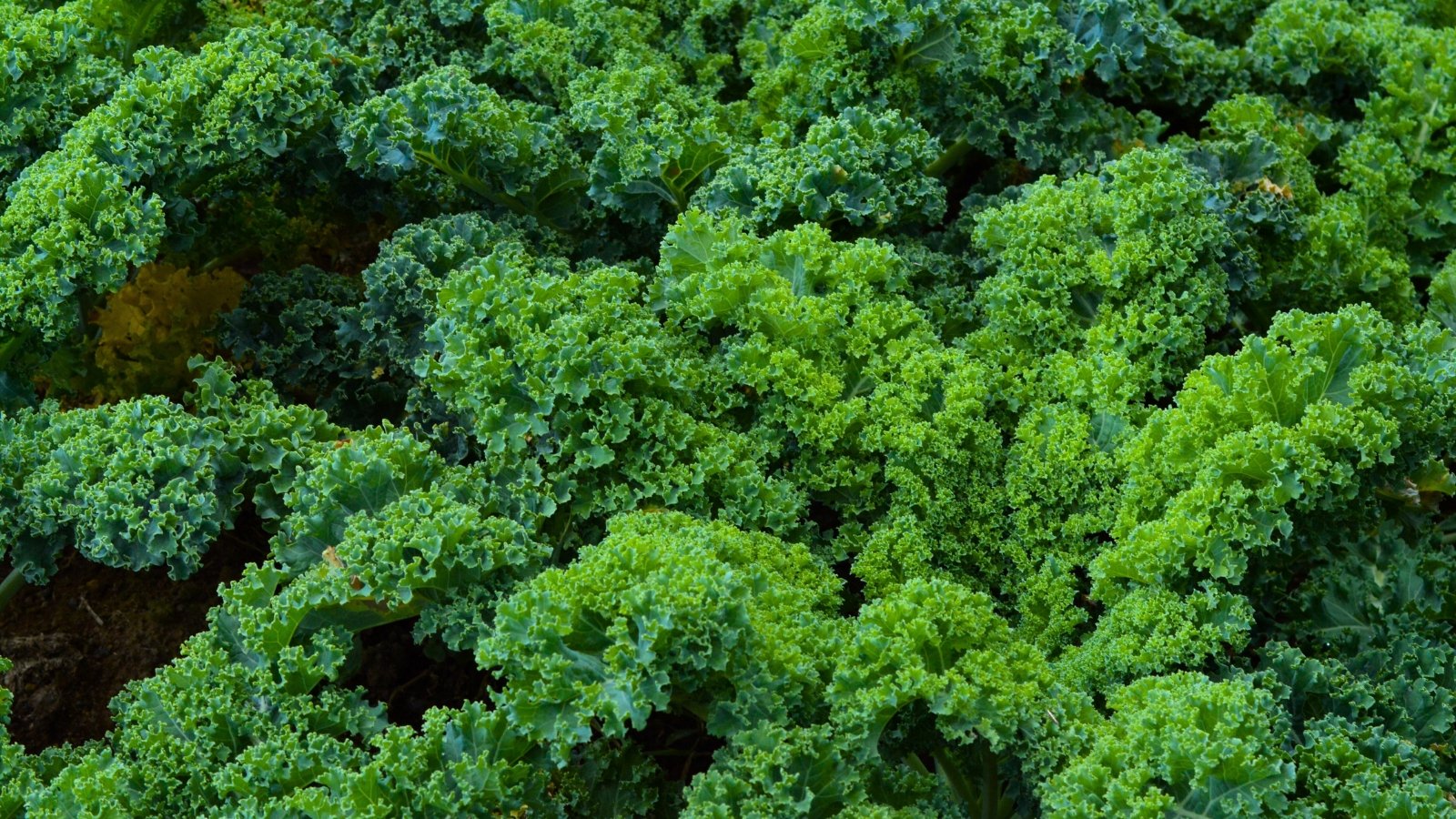 Leaves grow sweeter after a light autumn frost.
Leaves grow sweeter after a light autumn frost.Whether curly-leaved, feathery, or leathery, in deep green, purple, or red, kale is ornamental, delicious, and nutritious. It’s a source of numerous vitamins and minerals in a low-calorie green that grows easily in containers and beds.
‘Dwarf Blue Curled’ is an 1800s heirloom with exceptional cold hardiness that also withstands some heat during seasonal transitions. Its ruffly leaves mature in 21 to 55 days and sweeten after a frost.
‘Redbor’ is statuesque with upright, magenta-red stems. The foliage transitions from dusky blue-green to burgundy and plum in cooling autumn temperatures. ‘Redbor’ has superior cold-hardiness and matures in 50 days.
Snap Peas
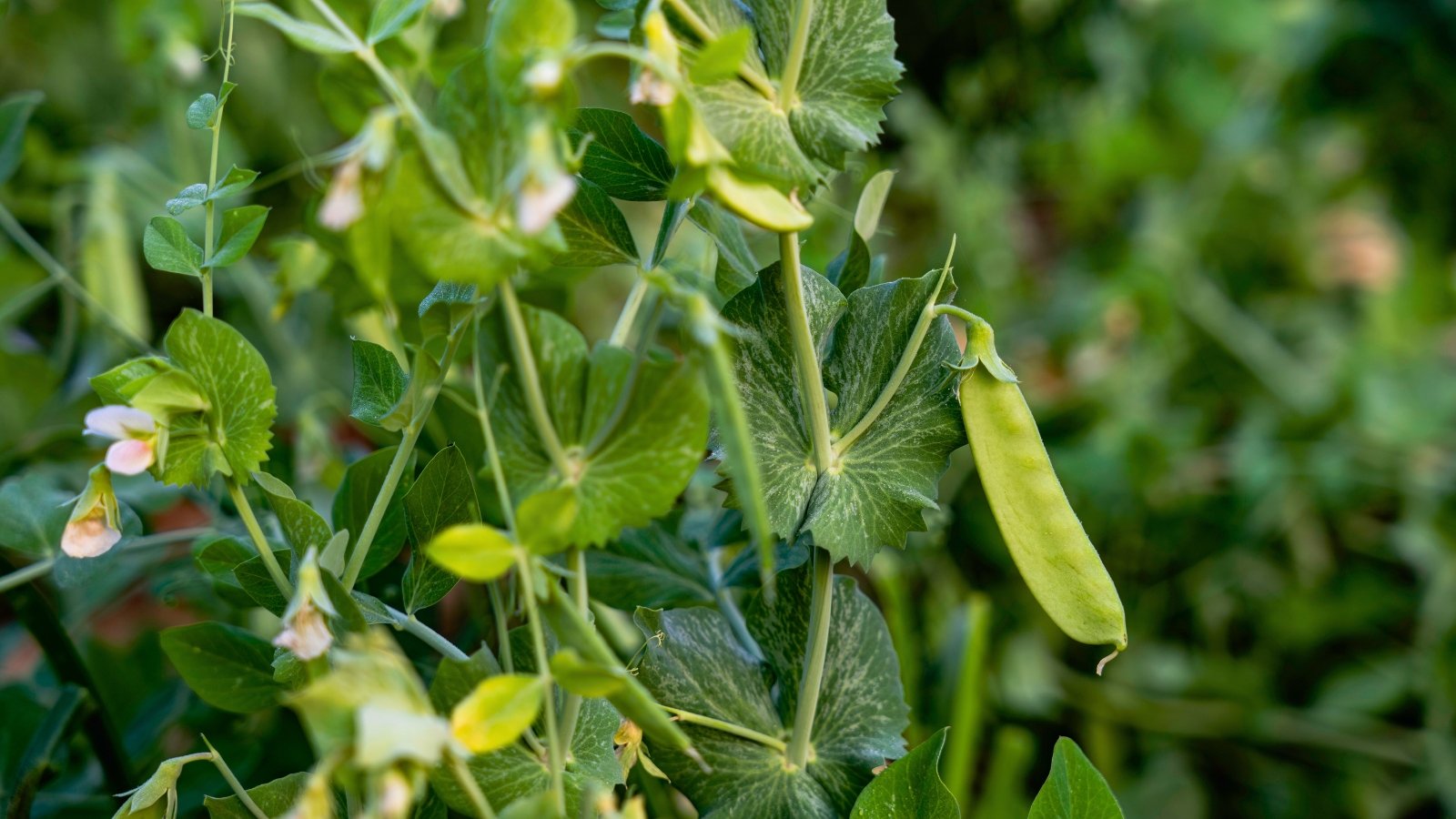 Plant early and again before fall for an extended harvest.
Plant early and again before fall for an extended harvest.Snap peas are made for fresh snacking right off the stem, but also brighten steamed and stir-fried dishes. They thrive in cool, mild weather and supply vitamins C, K, and iron, supporting immune health and blood cells.
‘Sugar Daddy’ is compact and grows well in a container, needing only a small trellis or fence for support. The short vines boast improved disease resistance, and the slender, sweet pods mature in 60 days.
‘Sugar Magnolia’ is a favorite with showy purple flowers and pods. The robust vines grow six to seven feet long and do best with a large trellis or A-frame. The sweet pods are stringless on short vines with improved disease resistance. The slender, deep green, three-inch pods are ready in about 60 days.
Sow seeds in spring and another round 10 to 12 weeks before fall’s first frost, when temperatures are below 85°F (29°C). In the warm season, add bush beans to the mix. They compare to peas in terms of nutrition, are low in calories, and high in vitamins, minerals, fiber, and phytonutrients.
Peppers
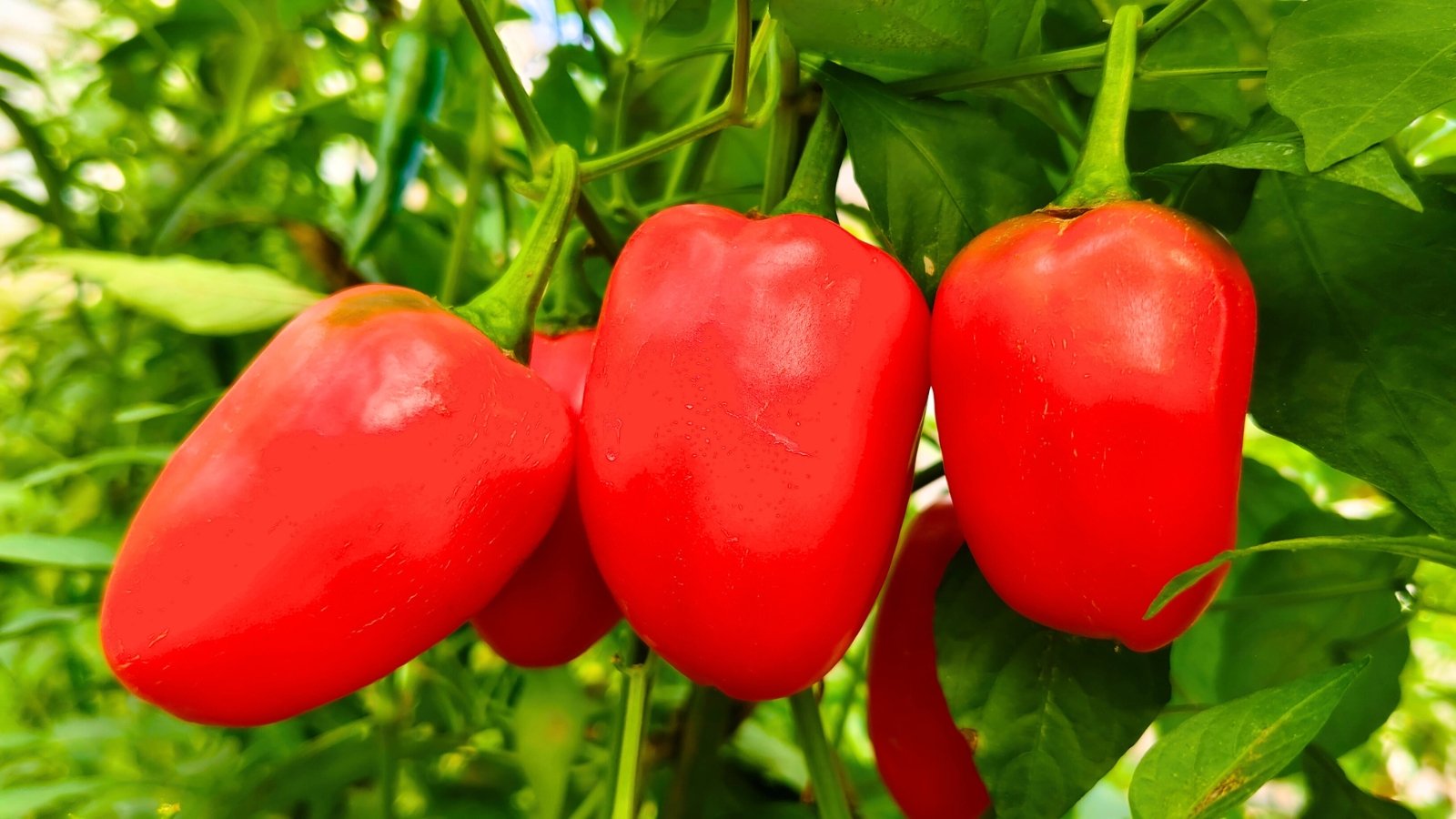 Color change signals peak nutrients and flavor.
Color change signals peak nutrients and flavor.Peppers spice up the veggie garden and the plate with their colorful bells or tapers. Their health benefits include vitamins A and C, potassium, fiber, and antioxidants that support eye and immune health. Water-filled, these nutritious garden plants also aid in hydration (especially bell peppers) and are low in sugar.
While immature peppers are often green, depending on the variety, they often ripen to red, yellow, orange, and purple. There are minor variations in the nutrient content at full color. Red peppers, for example, show the most beta-carotene, while orange has the most lutein. Grow a diversity of peppers to harness their ripe powers.
In mild climates, sow peppers outdoors two to four weeks after the final frost. In cold climates, start seeds indoors eight to ten weeks before transplanting as temperatures warm.
Tomato
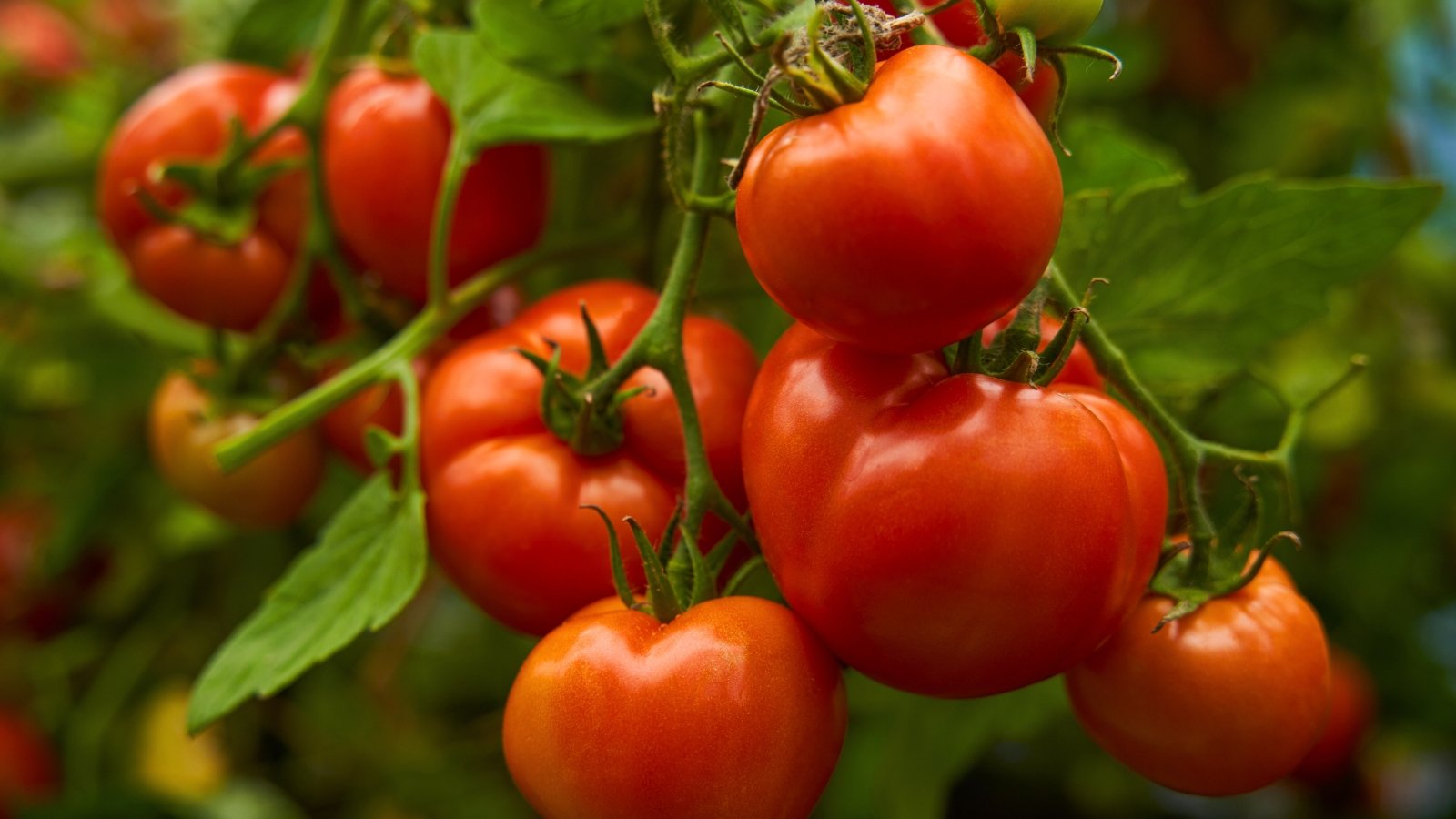 These garden favorites offer rich taste with beautiful dusky hues.
These garden favorites offer rich taste with beautiful dusky hues.Tomatoes are antioxidant-rich with their high lycopene levels. They’re also the signature taste of summer that lasts beyond the season with preserving and canning. From heirloom to modern hybrids, cherry to big beefsteak, tomatoes suit any garden scale. For increased anthocyanin, the healthy antioxidants, add purple-pigmented varieties to the lineup.
‘Chocolate Cherry’ is a prolific producer of sweet, one-inch round cherries that ripen to purplish-red. The indeterminate vines reach up to six feet tall and produce all season. Thin-skinned and juicy, these are among the most flavorful of the cherry types.
‘Cherokee Purple’ and ‘Black Krim’ are heirloom beefsteak types with rich coloration. ‘Cherokee Purple’ in dusky purple and rose has a rich, sweet flavor with a slight smokiness. ‘Black Krim’ has dark, juicy interiors and a balanced, rich, sweet, and salty taste. Both bring a unique twist to the classic summer slicer.
Cherry
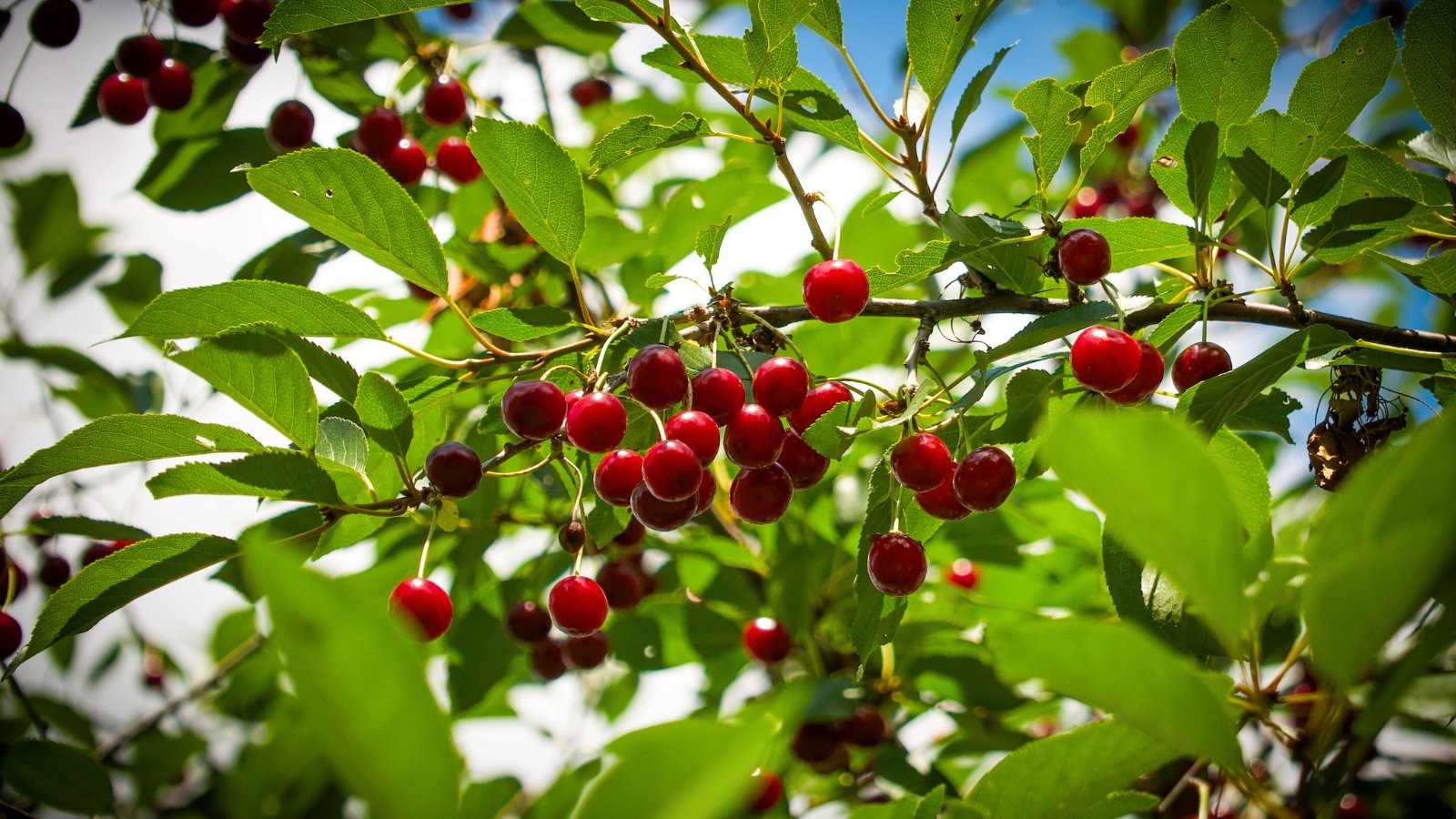 Spring blooms attract bees and lead to fruit.
Spring blooms attract bees and lead to fruit.Adding cherry trees to the backyard orchard diversifies the collection. Their spring blossoms support pollinators and lead to more cherries than we know what to do with. The stone fruits contain antioxidants in addition to vitamins C and A, beta-carotene, and other nutrients.
There are two main Prunus species: sweet cherries (Prunus avium) and tart or sour cherries (Prunus cerasus). Sweet cherries are what we enjoy fresh, in addition to cooking and preserving, while tart cherries are usually for cooking and baking, and the highlight of pies.
For the best fruiting, many require another variety for cross-pollination. Newer cultivars are self-fruiting and can produce on their own, though yields improve with another specimen nearby.
Cherry trees perform best in areas with mild summers and cool winters. Cool winters offer a necessary chill period for flowering and fruiting, which is around 1,000 hours between 35-55°F (2-13°C).


 6 hours ago
1
6 hours ago
1


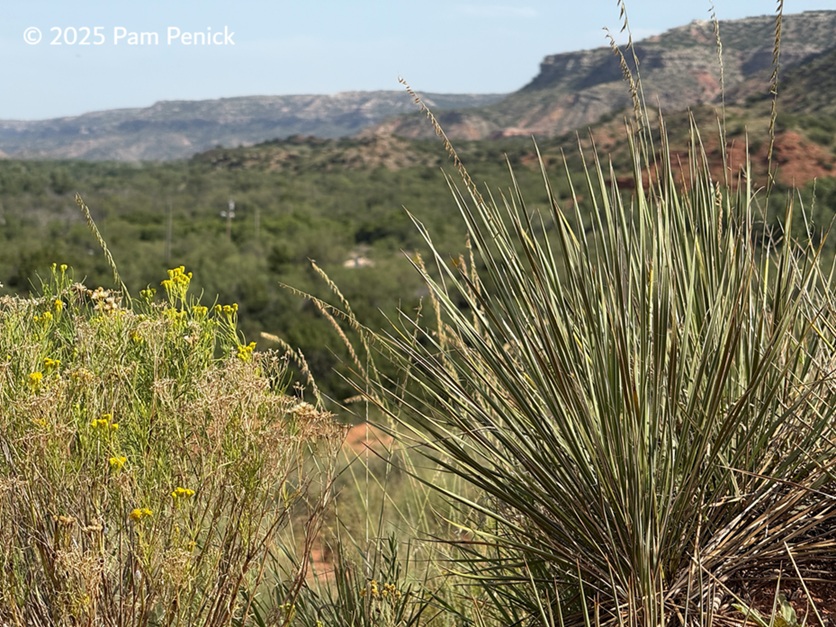
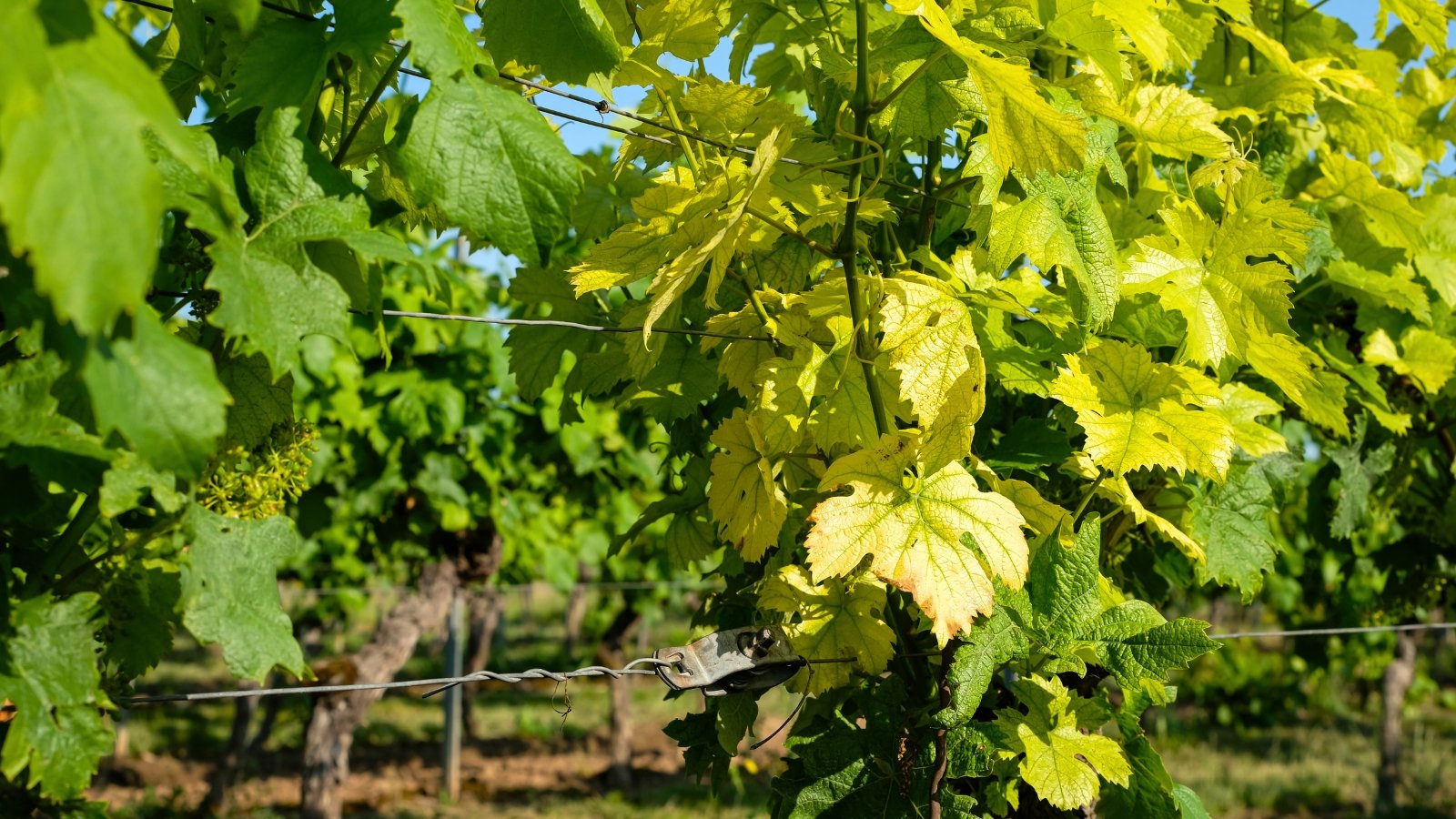

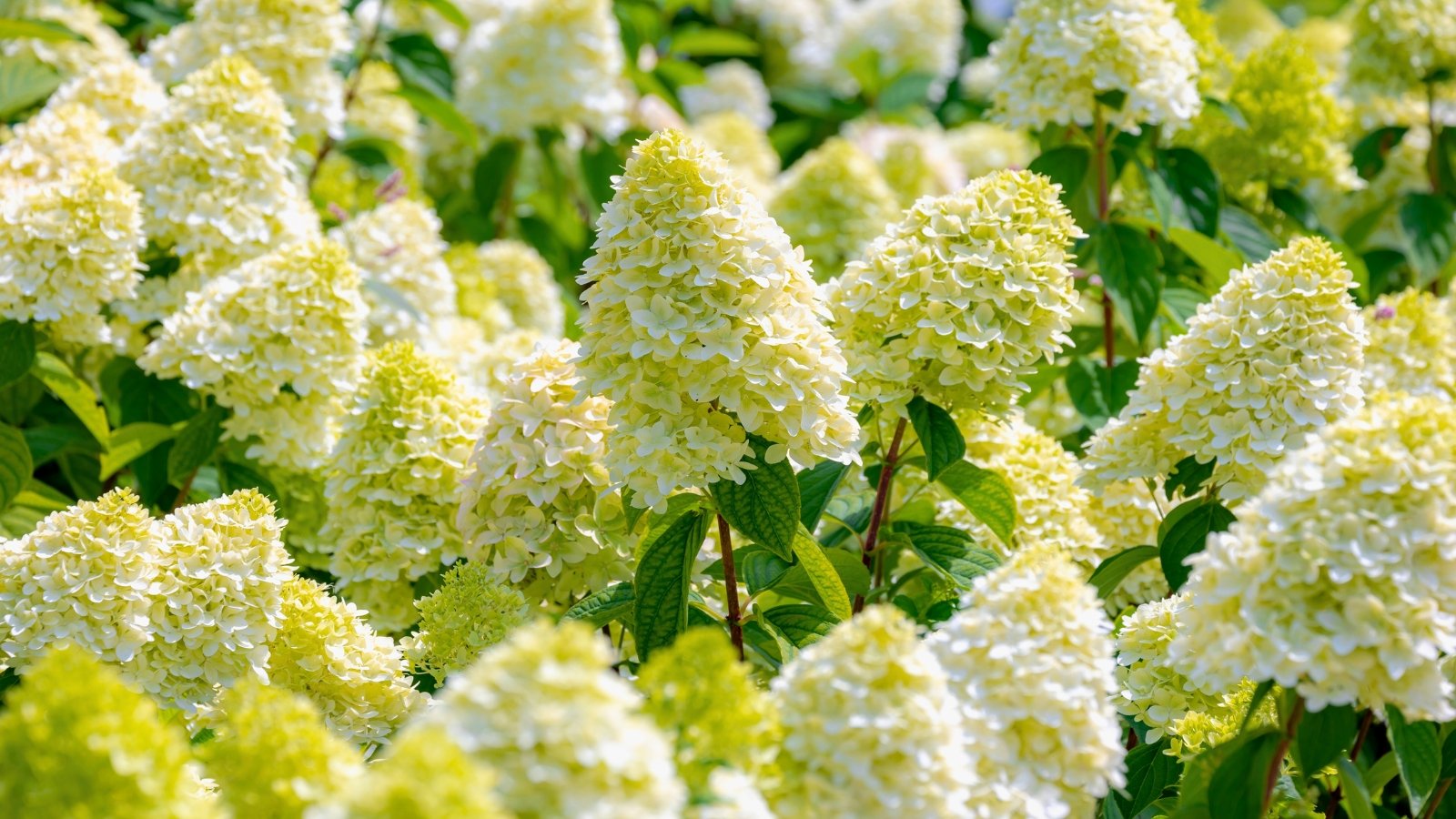















 English (US) ·
English (US) ·  French (CA) ·
French (CA) ·